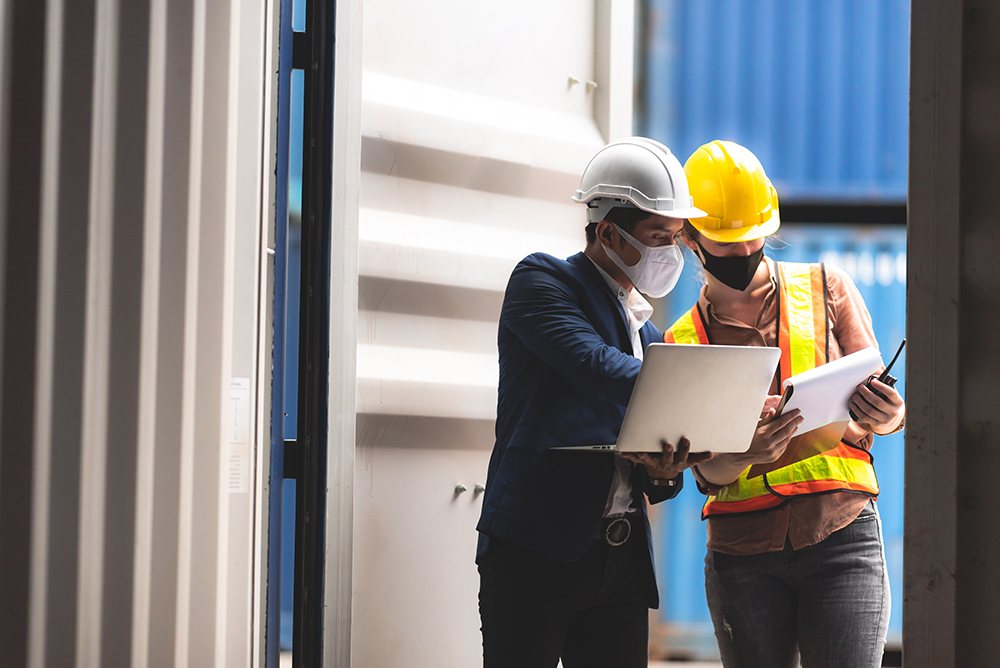

Columns/Blogs
Health & Safety
Managing/Leadership
How strong leadership will drive performance in ‘new normal’
By Lisa McGuire
 Photo: chokniti/Adobe Stock
Photo: chokniti/Adobe Stock The continued rise of COVID-19 cases across Canada requires leaders to adapt and maintain safe operations through rapid change.
Leaders must be able to pivot rapidly to meet the emerging risks of the pandemic. The speed of change poses unprecedented challenges to protecting both business and the safety and well-being of our most important asset — people.
Leadership has always been a critical factor in the success of workplace health and safety.
COVID-19 has become a catalyst for leaders to rethink how they lead — and more importantly, how to protect their people and their business in the “new normal.”
Advertisement
Health and safety programs often rest on the shoulders of the safety professional — but that role should never exist in isolation. The connection between the CEO and the OH&S professional is a critical partnership, in the pandemic and beyond.
Leaders need to connect with their teams often, communicate regularly, adapt to meet diverse requests and demonstrate compassion through actions.
Leaders need more than just business skills to be successful; they need emotional intelligence to engage their teams.
To build trust, they must demonstrate that they care about people as much as profits. The choices a leader makes to grow the business and support employees through challenges defines their leadership.
Engage your employees
Start by asking the right questions. What issues do your workers, supervisors, and managers see on the job that need attention? What anxieties and concerns do employees have about COVID-19?
Effective employee engagement can help leaders and safety professionals develop solutions that go beyond compliance and adapt to their companies’ unique needs.
Work together with your employees to produce meaningful outcomes and build trust together.
Practise clear communication
Communicate clearly and often about changes and their impact on the workplace, safety procedures and policies. Let employees know why decisions have been made and outline the steps taken.
Provide opportunities for two-way dialogue whenever possible.
When safety protocols mean leaders have less face-to-face time with workers, the need for frequent and transparent communication is critical.
Pivot to protect
Leaders face ongoing challenges to stay on top of rapidly changing information, determine credible information sources and adapt quickly.
A crisis does not always allow adequate time to make decisions and adopt needed actions. A delayed reaction can have serious consequences with costly impacts for your employees and your business.
Be prepared to pivot rapidly to protect your people when new, reliable information becomes available.
Cultivate empathy
To lead with empathy, a leader must consider what it means to walk in an employee’s shoes.
The impact of the pandemic goes beyond physical health. The effects on mental and emotional well-being are just beginning to be understood.
Many workers are facing challenges they have never encountered before, such as:
• working remotely for the first time
• using unfamiliar technologies
• working with children at home or sending children to school with anxiety about the risks
• working with reduced staffing when co-workers are sick, quarantined, or unable to come to work
• social isolation and separation from extended family
• financial and job uncertainty.
Including mental health in OH&S programs has never been so important. Still, a lack of understanding and comfort with this topic remains a challenge.
Mental health is not as straightforward as other health and safety risks. Leaders need to learn more about psychological safety and adapt to create an environment that integrates good practices and behaviours that support mental resilience.
COVID-19 has changed our behaviours and perspective on health and safety. Globally, companies have changed how they view risk, working smarter and taking new steps to protect employees, customers and their business.
In turn, this has reshaped corporate values and a culture that will serve us beyond the current crisis. Safety habits — such as good hand hygiene — are already manifesting a positive impact by reducing seasonal flu transmission.
Prevention and protection strategies that we build today will have long-term benefits for our employees’ health and well-being in the future.
Leaders have the opportunity now to consider what new behaviours they want to keep beyond the pandemic to build a healthier workplace tomorrow.
 Lisa McGuire is the CEO of the Manufacturing Safety Alliance in Chilliwack, B.C.
Lisa McGuire is the CEO of the Manufacturing Safety Alliance in Chilliwack, B.C.
This Safety Leadership column appears in the November/December 2020 issue of OHS Canada.
Print this page